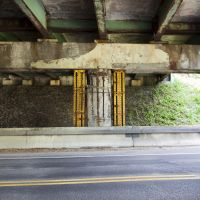The Problem
It is widely acknowledged that the nation’s limited investment in transportation infrastructure negatively affects local communities, regional job creation, national productivity, and global competitiveness. Despite this reality and prevailing low public borrowing rates, government leaders have failed to agree on which transportation investments to make, and how to pay for agreed investments.
The Proposal
A multifaceted approach would encourage investments in much-needed U.S. transportation infrastructure and stimulate the economy. Near-term recommendations include expanding the Transportation Infrastructure Finance and Innovation Act (TIFIA), reauthorizing Build America Bonds, increasing reliance on the Army Corps of Engineers and the Harbor Maintenance Trust Fund, and reforming the gas tax. Over the longer term, the country should invest in a nationwide infrastructure strategy, improve procurement procedures and research, and refine the use of user fee technologies.
Abstract
The nation’s transportation infrastructure, it is widely agreed, is eroding and in need of investment. Most policymakers recognize the merits of investing in the system, such as gains in productivity, global competitiveness, and job creation. Low public borrowing rates have also created an attractive climate for increased public investment. However, government leaders have failed to agree on which investments to make and how to pay for them. In order to break this logjam, this paper proposes two tracks of solutions, some of which can be implemented quickly, and others can be executed over the longer term. In the short term, we propose improvement and expansion of the Transportation Infrastructure Finance and Innovation Act lending program, reauthorization of Build America Bonds, better utilization of the Army Corps of Engineers and the Harbor Maintenance Trust Fund, and reform of the federal gas tax. Over the longer term, we recommend investing in research to improve user fee technology and using federal incentives to encourage states to adopt standardized and innovative user fee technology, fostering cooperation in pooled procurement among states and municipalities, and developing and implementing a broad national strategy to guide infrastructure investment in the United States.




